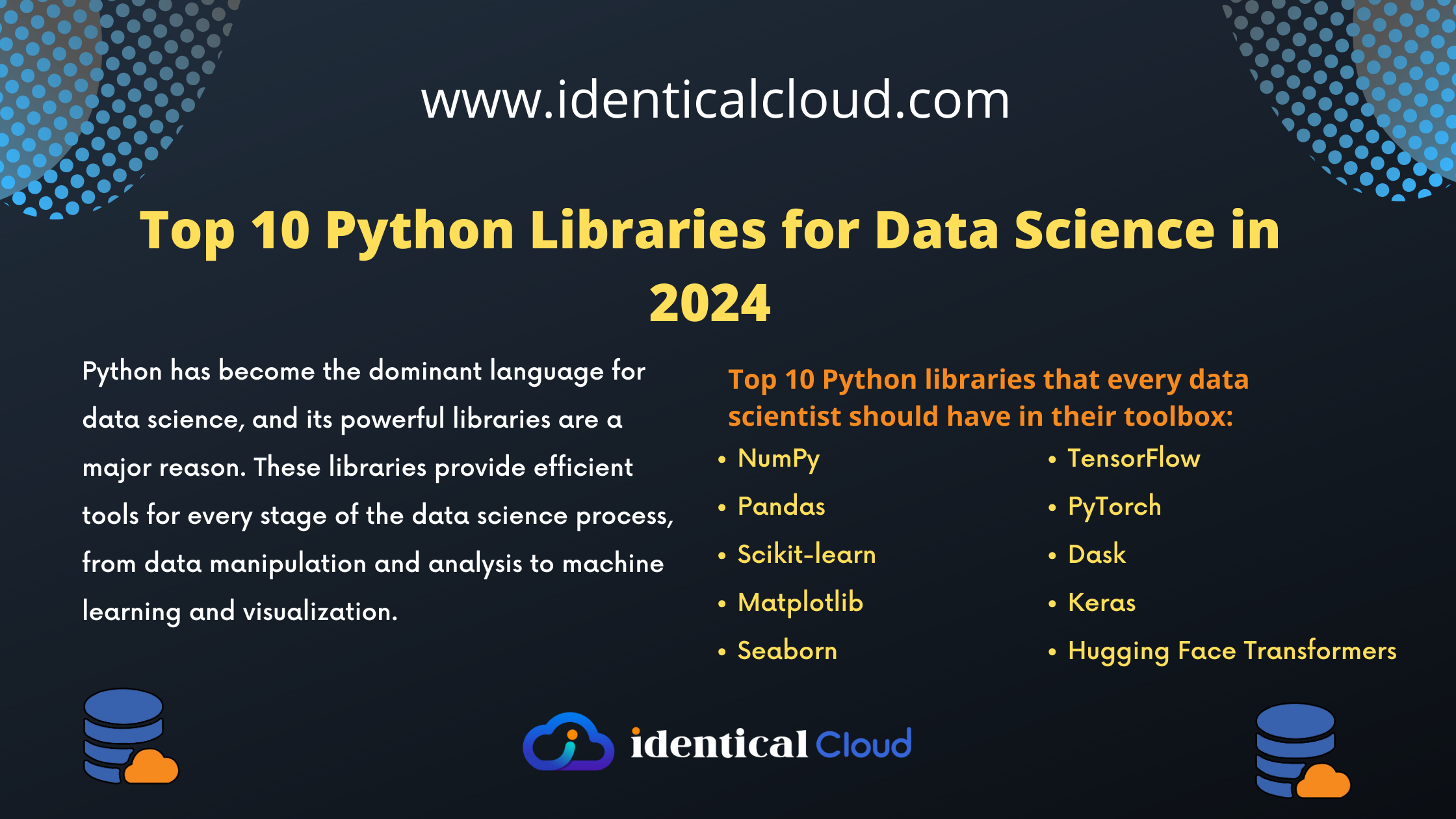
Top 10 Python Libraries for Data Science in 2024
Top 10 Python Libraries for Data Science in 2024
In the ever-evolving realm of data science, the appropriate tools can make or break your success. As you embark on your data science journey, equipping yourself with the right arsenal of Python libraries is crucial for tackling complex data challenges and extracting meaningful insights. This comprehensive guide delves into the top 10 Python libraries that will empower your data science endeavors in 2024.
Through this carefully curated selection of libraries, you’ll gain a deeper understanding of the essential tools that data scientists rely on to perform data analysis, machine learning, and deep learning tasks. From the fundamental building blocks like NumPy and Pandas to the advanced capabilities of TensorFlow and PyTorch, each library offers unique strengths and functionalities that will transform your approach to data exploration and modeling.
NumPy
NumPy is the fundamental library for scientific computing in Python. It provides a powerful array object that allows for efficient and vectorized operations on large datasets. NumPy is essential for data manipulation, analysis, and machine learning.
Pandas
Pandas is another essential library for data science. It provides high-level data structures like DataFrames and Series, which make it easy to work with tabular data. Pandas also offers a wealth of functions for data cleaning, manipulation, and analysis.
Scikit-learn
Scikit-learn is the most popular machine learning library in Python. It provides a wide range of supervised and unsupervised learning algorithms, including regression, classification, clustering, and dimensionality reduction. Scikit-learn also offers a variety of tools for model evaluation and selection.
Matplotlib
Matplotlib is the most popular library for data visualization in Python. It provides a wide range of plotting functionalities, including 2D and 3D plots, histograms, scatter plots, and bar charts. Matplotlib can also be used to create custom visualizations.
Seaborn
Seaborn is a built-on-top of Matplotlib library that provides a more user-friendly and aesthetically pleasing interface for data visualization. It offers a wide range of themes, color palettes, and plot types that can be used to create stunning visualizations.
TensorFlow
TensorFlow is a popular open-source library for numerical computation and large-scale machine learning. It is widely used for deep learning applications like image recognition, natural language processing, and speech recognition.
PyTorch
PyTorch is another popular open-source library for deep learning. It is known for its dynamic computational graph, which makes it easier to develop and debug deep learning models. PyTorch is a good choice for research and development, while TensorFlow is better for production deployments.
Dask
Dask is a parallel computing library that allows you to scale your data science workloads to larger clusters of machines. This is essential for working with large datasets that cannot fit on a single machine.
Keras
Keras is a high-level neural networks API that is easy to use and can run on top of TensorFlow or PyTorch. It provides a simple and consistent way to build and train deep learning models.
Hugging Face Transformers
Hugging Face Transformers is a library that provides pre-trained models and tools for natural language processing (NLP) tasks. It offers a variety of pre-trained models for tasks like sentiment analysis, question answering, and text summarization.
As you master these powerful Python libraries, you’ll be well-equipped to tackle the diverse challenges and opportunities that lie ahead in the field of data science. Embrace the power of these tools to unlock the hidden potential of data, uncover groundbreaking insights, and make a significant impact in the ever-changing world of data-driven decision-making. Embark on your data science journey with confidence, knowing that you’ve equipped yourself with the tools of champions – the top 10 Python libraries for Data Science in 2024.
